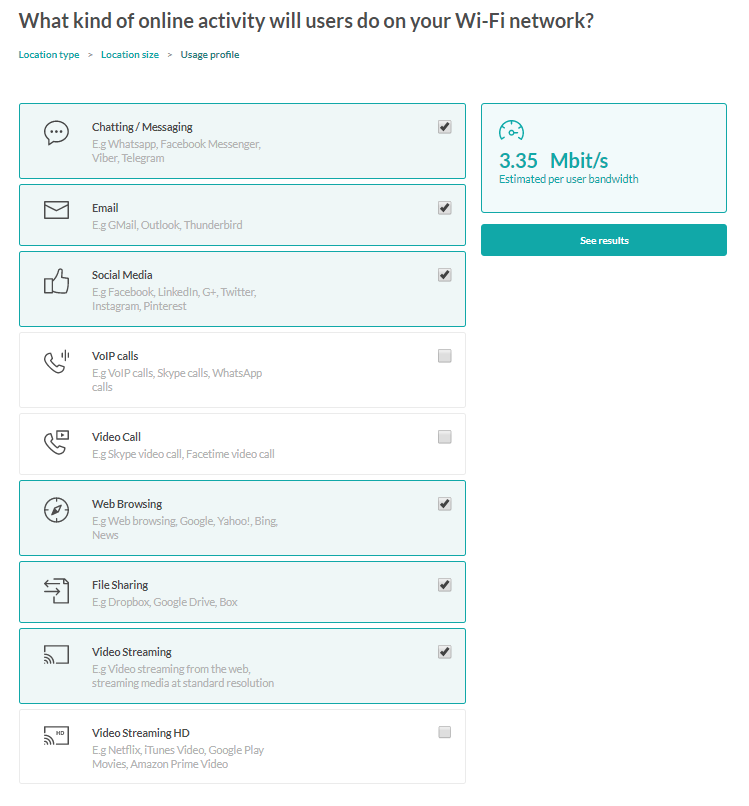How to choose the best access point for your restaurant’s WiFi network (part 2)

When implementing a new Wi-Fi network in a restaurant, you need to choose the right access point depending on the characteristics of the environment in which it will be deployed.
In the first part of this article, we analysed the 3 main aspects to consider when deploying a Wi-Fi network at a restaurant: the size of the network’s location, the number of concurrent users and internet usage.
Based on these aspects, let’s now identify the right access points for your Wi-Fi project, specifically when deploying in a restaurant. To do so, we will rely on the estimations provided by our new tool that helps you select the perfect device for your Wi-Fi network: the Tanaza Access Point Selector.
Firstly, to select the best access point for your implementation, you need to consider the following variables:
- Technology: you can choose among dual-radio access points, devices with LAN ports or PoE, and access points operating on the 802.11ac, also known as WiFi 5, wireless networking standard.
- Installation type: depending on your location, you can choose to install your device on desktops, ceilings, walls, poles or racks.
- Radiation shape: antennas deployed in Wi-Fi networks can follow different patterns based on their directionality. Omnidirectional antennas are suitable for indoor environments as they cover the area close to the access point. With directional antennas, instead, you can decide what direction the radio frequency energy will take to cover a long space, i.e. corridors or hallways. Sector-shaped antennas are deployed in limited areas, as they can cover small distances of around 4-5 km.
- Price: based on your Wi-Fi project’s budget, you can opt for either low-cost, medium-cost or high-cost devices. Tanaza’s multi-vendor approach allows you to choose among a wide range of access points from different vendors, at different prices.
When deploying your network in restaurants, you need to provide your Wi-Fi connection to a different number of concurrent users, depending on the size of your location. Let’s suppose you will allow your Wi-Fi users to perform different activities on your network, such as: checking emails, browsing the web, accessing light/medium bandwidth usage applications – i.e. Whatsapp for chatting/messaging, Facebook and other social media – as well some heavy bandwidth usage apps – i.e. Google Drive for file sharing and Youtube for video streaming at standard resolution -, at the same time. In this case, the estimated per-user bandwidth in your network will be of 3.35 Mbit/s, as shown in the picture below.

If you are setting up your Wi-Fi network in a large restaurant, you can use one of the following devices: UniFi AC IW, UniFi AC Mesh, EnGenius EAP1200H, EnGenius EAP600 and Open-Mesh OM5P-AC. All of these access points can be installed on walls, ceilings, poles and racks, they are dual radio devices, have omnidirectional, sector-shaped and directional antennas, and can be purchased at reasonable prices. Consider that all these access points can hold a maximum number of 30 users per unit. If you need to deploy your Wi-Fi network in a medium-size restaurant, you can still choose one of the devices recommended above, but keep in mind that in this case, they will handle a maximum number of 12 users per unit. If your Wi-Fi project targets a small restaurant, again, you can opt for one of the suggested access points, taking into consideration that they will handle a maximum number of 5 users per unit.
You can play further with our Tanaza Access Point Selector to find the access point that better fits your network’s requirements!

